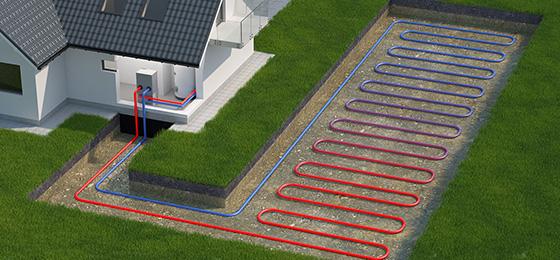Assessing the potential of renewable energy in Switzerland using Big Data

The “HyEnergy” project sought to study the potential of hybrid renewable energy systems, i.e. systems combining two types of energy production in the form of heat or electricity.
With more than 40%, heating and cooling buildings represent a significant proportion of the energy demand in Switzerland and are also responsible for a third of the CO2 emissions.
Shallow geothermal energy uses heat pumps. There are currently 100,000 in Switzerland, out of a total of 350,000 heat pumps overall. This is a very important development. We have one of the highest figures per inhabitant of any country, and ultimately, the aim is to reach 1,500,000 heat pumps by 2050 as part of the energy transition envisaged by the Swiss Federal Council.
What was the objective of the “HyEnergy” project?
The “HyEnergy” project sought to study the potential of hybrid renewable energy systems, i.e. systems combining two types of energy production in the form of heat or electricity. Renewable energy sources are intermittent rather than constant. Photovoltaic solar electricity production during the day is combined with wind energy production during the night or the winter. The result is a hybrid system that can meet demand day and night, summer and winter.
How did you proceed?
To assess the potential of renewable energy on a national scale, we developed an approach which combines various methods. We used what are known as big data mining techniques, as well as advanced statistical methods including machine learning, and state-of-the-art analytical and geospatial models that enable us to calculate the potential with a high level of detail.
The data used contains various pieces of information: about natural resources, the built environment, and the renewable energy technologies used. We also assessed the uncertainty of the potential energy supply, which is particularly important for the solar and wind resources given their extremely variable nature and the fact that they vary over the course of days and even months.
What major results have you achieved?
The project was the first to quantify the maximum amount of energy that can be extracted from geothermal heat pumps deployed on a large scale.
On a national level, it was shown that geothermal heat pumps used solely for heating buildings could cover 30% to 70% of future heat pump needs, depending on the restrictions in place in different cantons.
Why is it important to be interested in these hybrid energy systems?
For what are known as ‘hybrid’ energy systems, shallow geothermal energy is very important because it is linked to other forms of renewable energy. For example, in order to function, heat pumps require an electricity supply that is generally provided by solar panels installed on the roof. Furthermore, geothermal energy is connected to solar thermal energy, which can be used to regenerate the energy extracted from the ground. Thanks to this seasonal regeneration, it has been calculated that the potential of shallow geothermal energy can be increased by over 50%.
Why is it important to look at the scale of neighbourhoods?
By focusing on buildings, the energy production can be brought closer to the demand – building roofs can be used for solar energy production, i.e. electricity and heat, and gardens and other nearby spaces can be used for geothermal installations. When used in combination, these hybrid energy systems offer great potential for decarbonising Swiss buildings.
